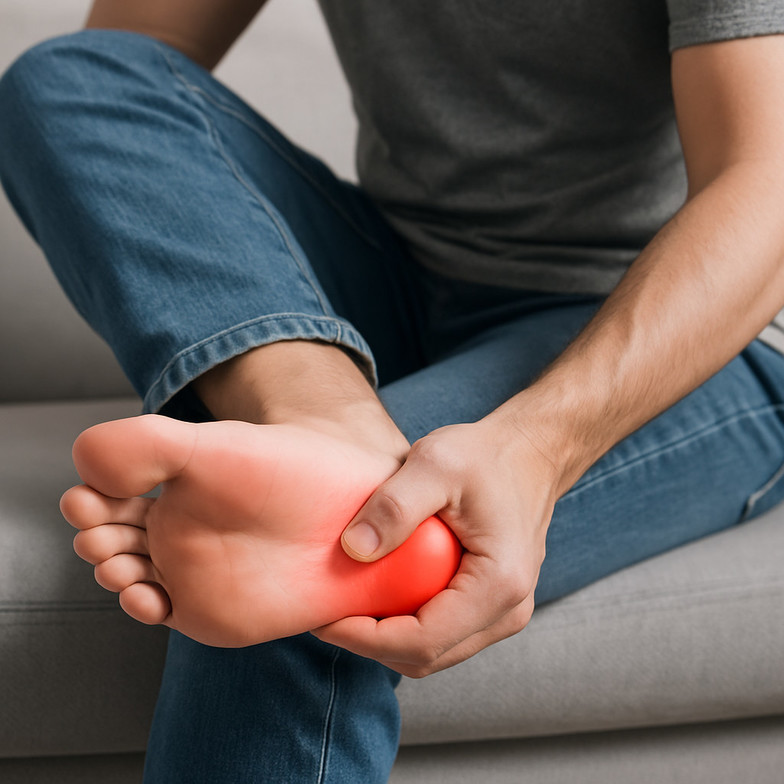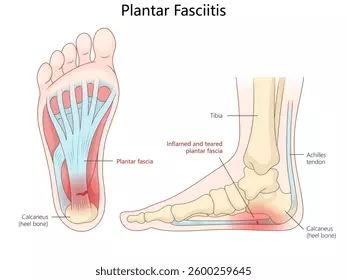
If you’ve been waking up with heel pain or discomfort after standing for a while, you might be dealing with plantar fasciitis—a common cause of heel pain.
What Is Plantar Fasciitis?
Plantar fasciitis occurs when the thick band of tissue (the plantar fascia) that runs across the bottom of your foot and connects your heel bone to your toes becomes irritated or inflamed. This often results in sharp, stabbing pain near the heel, especially with your first steps in the morning or after periods of inactivity.

How Do People Get Plantar Fasciitis?
Several factors can contribute to plantar fasciitis:
-
Overuse: Increased activity or prolonged standing can strain the plantar fascia.
-
Foot Mechanics: Flat feet, high arches, or abnormal walking patterns can affect weight distribution.
-
Improper Footwear: Shoes lacking proper arch support or cushioning increase stress on the feet.
-
Tight Muscles: Tight calf muscles can limit ankle movement, putting extra strain on the plantar fascia.
What You Can Do at Home
Managing plantar fasciitis at home can help ease symptoms:
-
Stretching: Regularly stretch your calves and the bottom of your feet.
-
Ice Therapy: Apply ice to the affected area for 15–20 minutes several times a day to reduce inflammation.
-
Frozen Water Bottle Massage: Freeze a water bottle and roll your foot over it for gentle massage and icing at the same time—this helps soothe the plantar fascia.
-
Massage Gun: Using a massage gun on the calf muscles and the bottom of your foot can help release tightness and improve blood flow. Just be gentle and avoid applying too much pressure directly on painful spots.
-
Supportive Footwear: Wear shoes with good arch support and cushioning.
How We Treat Plantar Fasciitis at Alleviate
At Alleviate Chiropractic and Wellness, we know that plantar fasciitis isn’t the same for everyone. That’s why we start with a detailed, full-body evaluation to understand how your hips, knees, feet, and overall movement patterns might be contributing to your heel pain.
By assessing your unique biomechanics and structure, we can develop a treatment plan tailored specifically to you. This personalized approach helps address the root causes of your pain, not just the symptoms, improving your chances for lasting relief and better function.
Whether that includes manual therapy, targeted exercises, or other supportive care, we’ll guide you through every step to help you get back on your feet comfortably and confidently.
If heel pain is holding you back, don’t wait for it to improve on its own. Call us today or book online to schedule your evaluation and take the first step toward lasting relief.
Best regards,
Dr. Tanner Schuh
Disclaimer:
This blog post is for educational purposes only and is not intended to replace professional medical advice, diagnosis, or treatment. If you have persistent pain or any health concerns, please consult a qualified healthcare provider.
Dr. Tanner Schuh
Contact Me


